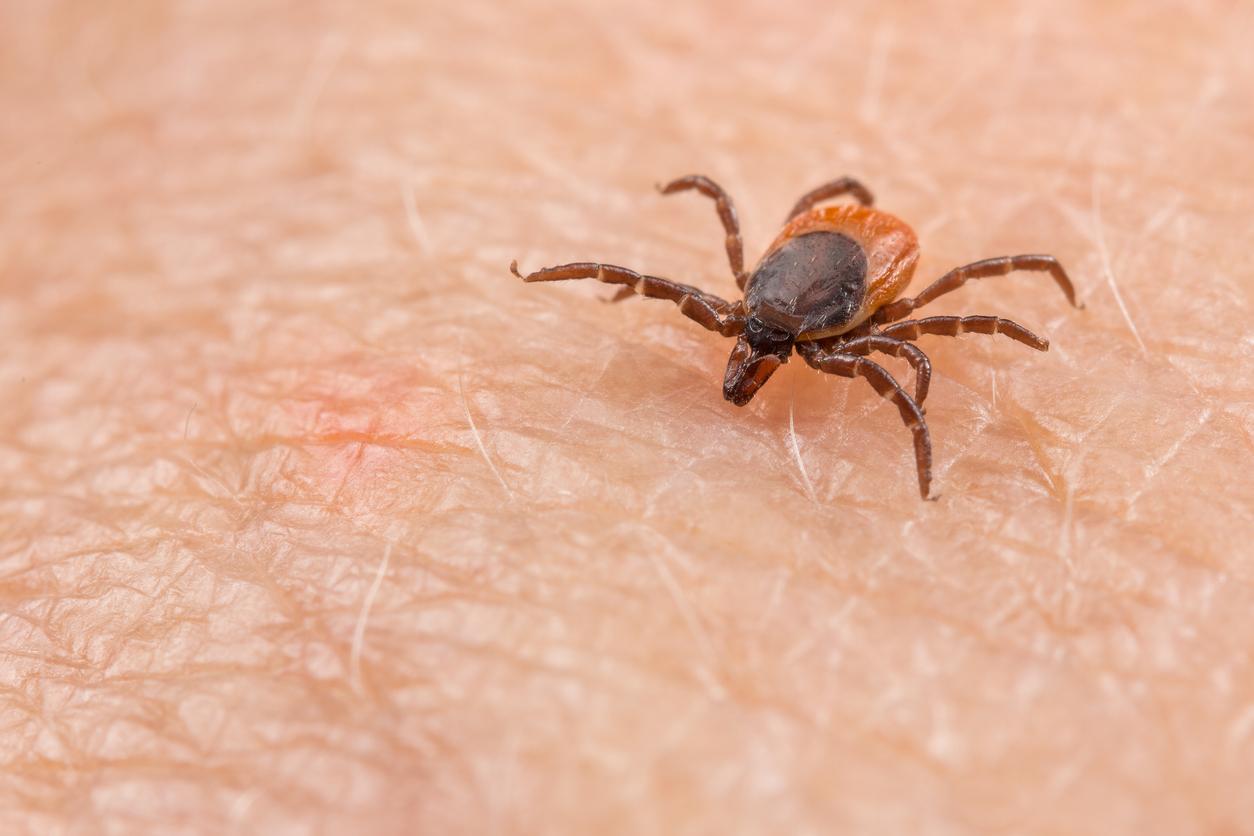Lyme disease may have finally met its nemesis. The presence in forests of foxes would reduce the number of ticks infected with the bacteria Borrelia burgdorferi.

Lyme disease progresses. On reading the contamination figures, which are no doubt largely underestimated, it becomes a public health problem. Health agencies are trying to react to this bacterial infection which is not always easy to treat, keeping in mind that to stop its spread, it is necessary to do prevention, and to take an interest in ticks.
By their bite, these arachnids are the vector of the bacteria designated as responsible for the disease, the Borrelia burgdorferi, as well as others still poorly identified. And their population is increasing in our forests. But these ticks might have found their enemy: the fox.
Human intervention
Specifically, the animal would lower the number of infected ticks. Dutch researchers have indeed shown that the more foxes there are in forests, the less ticks are vectors of the bacteria; and vice versa. The reduction is not negligible: in the areas most populated by foxes, the infected ticks collected from rodents can be up to 20 times less numerous.
These results were obtained by comparing tick infection rates in around 20 forests in the Netherlands. Some were nature reserves, with large populations of foxes. For others, canines have been driven out either involuntarily, when woods have been broken up by human activities, or on purpose, and are now virtually non-existent.
This is not the first time that this correlation is observed, but in an article published in the journal Proceedings of the Royal Society, scientists explain its mechanism.
The fox gone, the mice dance with the ticks
To reach a reproductive stage, ticks must have three blood meals, which in particular allow them to evolve from the larva stage to that of the nymph, then to its adult form. In the forest, the larvae, in principle devoid of any infection, cling to the first animal that comes along, which in these ecosystems are often small mammals: voles, mice, or other rodents.
However, these species are often carriers of many pathogens, including Borrelia. After the bite, ticks are infected, and can in turn transmit the bacteria to other animals, especially humans.
But when foxes roam, rodents become more discreet, and arachnids are somewhat lacking. They do not find a victim, or fall back on other species, sometimes on birds. Species less – or not at all – carriers of the bacteria. Thus, mechanically, the rate of infected ticks drops.
Cunning reintroduction
The predator, at the top of the food chain of these European forests after the disappearance of its carnivorous competitors such as the wolf or the lynx, is not the only factor influencing this proportion of infected ticks. The same correlation as with the fox was observed for martens, which also attack rodents.
The reintroduction of these species could therefore be a way to fight Lyme disease, by reducing the number of ticks infected with the Borrelia. Some ecologists fear that the foxes will induce a decline in murine populations, which the observations of the Dutch researchers do not confirm.

The hypothesis of Dr. Tim Hofmeester, lead author of the study, formulated after viewing films from cameras placed in forests: rodents reduce their movements when predators are active. They are not necessarily less numerous, but cover less ground, and thus pick up fewer ticks.
The idea will perhaps be studied by the multidisciplinary working group brought together by the French Ministry of Health, which is currently working on the revision of prevention and care protocols around Lyme disease. In the meantime, precautions for summer walks are in order (see box) !
How to avoid ticks this summer
This is the favorite period for ticks. They are on a war footing in the forests, but not only. Studies carried out in Europe show that 30 to 50% of contamination occurs in private gardens or municipal parks. To protect yourself from Lyme disease, the basic rules are simple and effective.
The Ministry of Health has launched a prevention campaign to help walkers. A leaflet is available online, and spots are broadcast on the radio, recalling four preventive measures.
As a priority, wear clothes covering the arms and legs, tucking the pants into the socks. When ticks get attached, they will naturally go up. With this trick, those hung on shoes or socks will not go up under clothing. Then you have to avoid brush and tall grass, where ticks are more numerous. The use of repellents is recommended.
Finally, when returning from a walk, it is useful to carefully inspect the whole body, in particular the areas of predilection for ticks: armpits, crotch, posterior face of the knees, bends of the elbows and breasts for women, scalp and back of the ears. A tick puller should be used to remove the tick cleanly.
Find the number of the Supplement
Lyme disease: the silent scandal
.

















